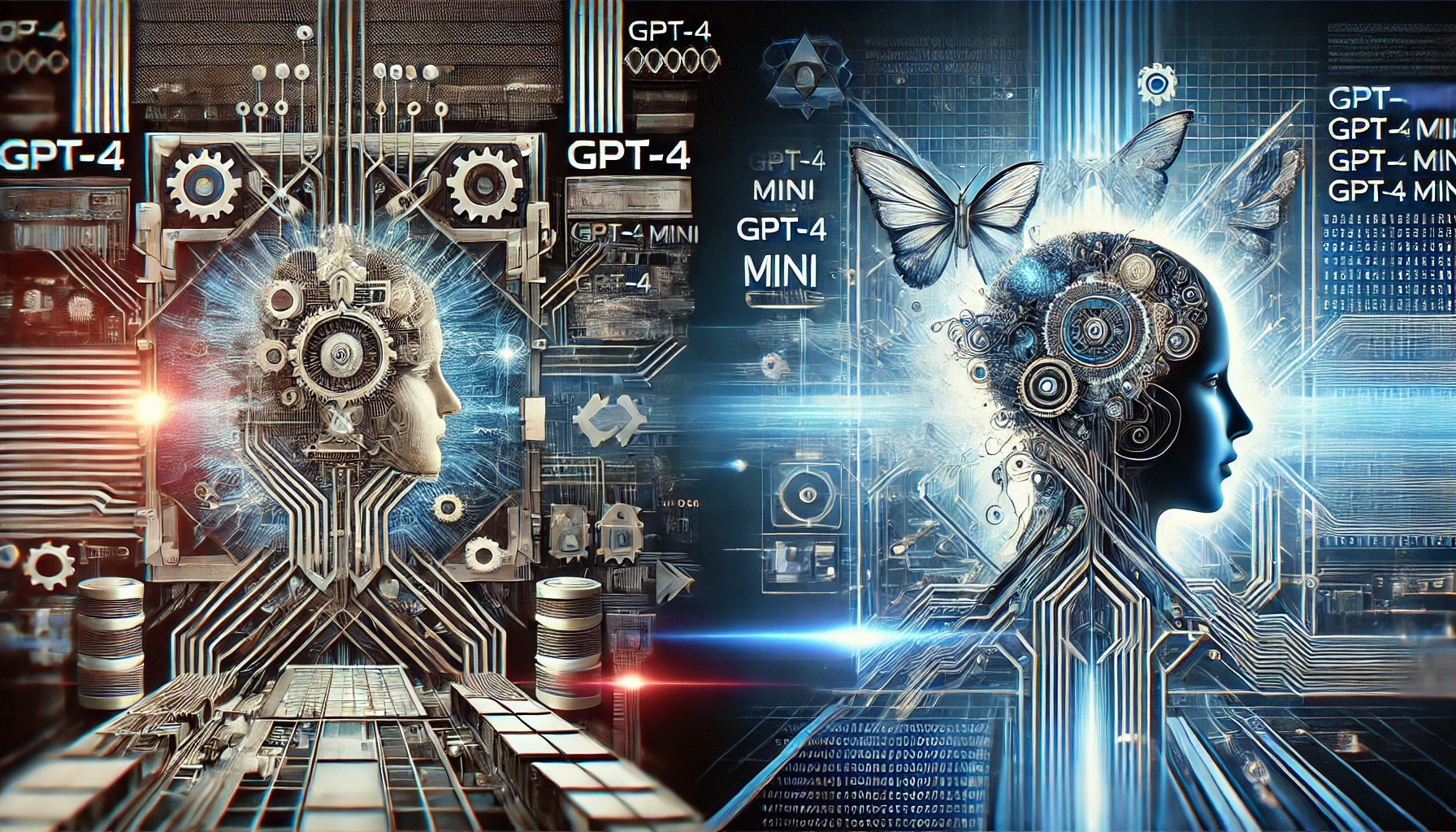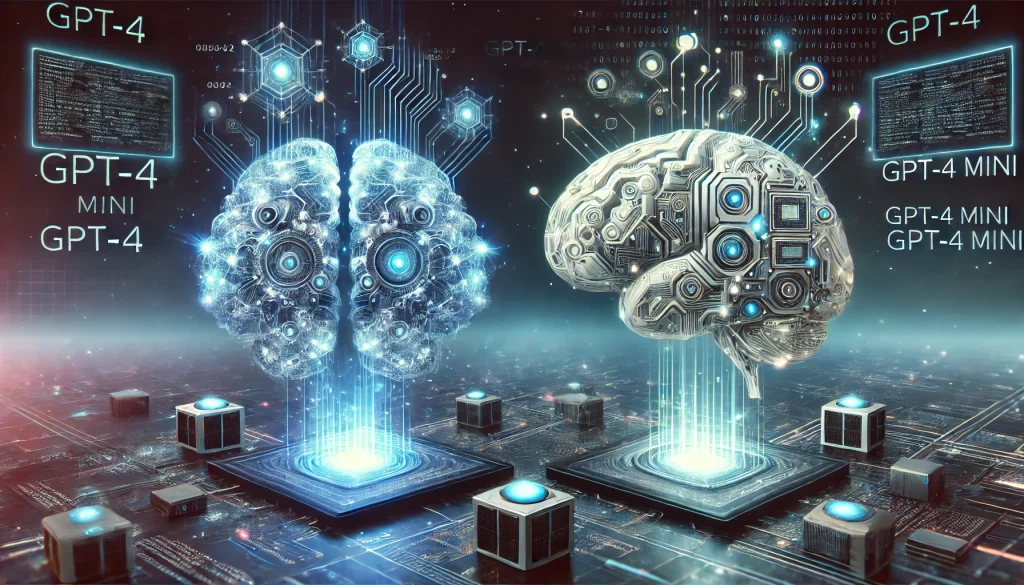
Comparing GPT-4 and GPT-4 Mini
Introduction:
In the realm of artificial intelligence (AI), OpenAI’s GPT-4 has set new benchmarks for natural language processing (NLP). Recently, OpenAI introduced the GPT-4 Mini, a scaled-down version designed to address specific needs within the AI landscape. This blog will compare GPT-4 and GPT-4 Mini, focusing on their efficiency, performance, and suitability for various applications.
Understanding GPT-4 and GPT-4 Mini:
1. GPT-4 Overview:
GPT-4, the latest iteration of OpenAI’s Generative Pre-trained Transformer series, represents a significant advancement in AI technology. It boasts a massive number of parameters, enabling it to generate human-like text, understand complex queries, and provide nuanced responses. GPT-4’s capabilities make it suitable for a wide range of applications, including content creation, customer support, and more.
2. GPT-4 Mini Overview:
GPT-4 Mini, on the other hand, is a more compact version of GPT-4. While it retains many of the core functionalities of its larger counterpart, it is optimized to be more resource-efficient. GPT-4 Mini is designed to deliver robust performance in a smaller, more manageable package, making it ideal for environments with limited computational resources or where speed and efficiency are prioritized.
Comparing Efficiency:
1. Computational Resources:
GPT-4 is known for its extensive computational requirements due to its large model size and numerous parameters. This often necessitates powerful hardware and significant energy consumption. In contrast, GPT-4 Mini is engineered to operate efficiently on less powerful hardware, consuming fewer resources while still delivering high-quality performance.
2. Processing Speed:
Due to its reduced size, GPT-4 Mini generally offers faster response times compared to GPT-4. This makes it a preferable choice for applications requiring quick turnarounds, such as real-time chatbots or interactive systems. GPT-4’s larger size can sometimes lead to slower response times, especially when processing complex queries.
3. Cost-Effectiveness:
The cost associated with running GPT-4 can be substantial, given its high computational needs. GPT-4 Mini provides a more cost-effective solution, particularly for small to medium-sized enterprises or applications with budget constraints. By optimizing resource usage, GPT-4 Mini allows organizations to leverage advanced AI capabilities without incurring prohibitive costs.

Performance Comparison:
1. Accuracy and Context Understanding:
GPT-4 excels in generating highly accurate and contextually rich responses, thanks to its extensive training data and large parameter set. It can handle intricate queries and generate sophisticated content with a high degree of relevance and coherence. GPT-4 Mini, while still powerful, may exhibit slightly reduced accuracy and depth due to its smaller model size. However, it remains effective for a broad range of tasks, offering a balanced performance for many applications.
2. Application Suitability:
GPT-4’s advanced capabilities make it suitable for complex tasks such as high-level content creation, detailed analysis, and nuanced customer interactions. It is ideal for applications that require deep contextual understanding and extensive language capabilities. GPT-4 Mini, on the other hand, is well-suited for applications where efficiency and speed are critical, such as in mobile applications, embedded systems, or scenarios where computational resources are limited.
3. User Experience:
Users interacting with GPT-4 can expect a highly sophisticated and nuanced experience, with the model’s advanced understanding translating into detailed and contextually appropriate responses. GPT-4 Mini offers a more streamlined experience, with fast and efficient responses that cater to a wide range of practical applications. While it may not match GPT-4 in every aspect of performance, it provides a compelling alternative for many use cases.
Use Cases and Recommendations:
1. When to Choose GPT-4:
- Complex Content Creation: When generating in-depth articles, reports, or creative content that requires a high degree of accuracy and contextual relevance.
- Advanced Customer Support: For scenarios where nuanced understanding and detailed responses are essential to address customer queries effectively.
- Research and Analysis: In applications that demand extensive data analysis, trend prediction, and in-depth insights.
2. When to Choose GPT-4 Mini:
- Real-Time Applications: For use cases that require quick responses, such as real-time chatbots or interactive interfaces.
- Resource-Constrained Environments: When deploying AI solutions on devices with limited computational resources or in scenarios where cost efficiency is a priority.
- Mobile and Embedded Systems: Ideal for applications where a lightweight, efficient model is needed without sacrificing core functionality.
Conclusion:
Both GPT-4 and GPT-4 Mini offer valuable capabilities in the AI landscape, each catering to different needs and constraints. GPT-4 stands out for its comprehensive performance and accuracy, making it suitable for complex and resource-intensive applications. GPT-4 Mini, with its focus on efficiency and speed, provides a cost-effective and practical solution for a wide range of use cases, especially where computational resources are limited.
By understanding the strengths and limitations of each model, organizations and developers can make informed decisions about which version of GPT is best suited to their specific requirements. Whether opting for the robust capabilities of GPT-4 or the streamlined efficiency of GPT-4 Mini, both models represent significant advancements in AI technology, paving the way for innovative applications and solutions

Leave a Reply